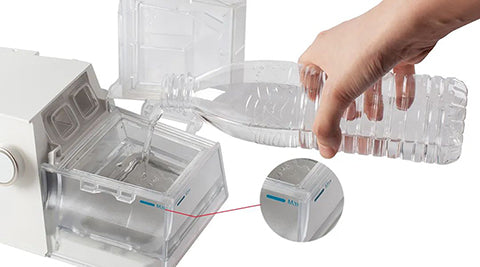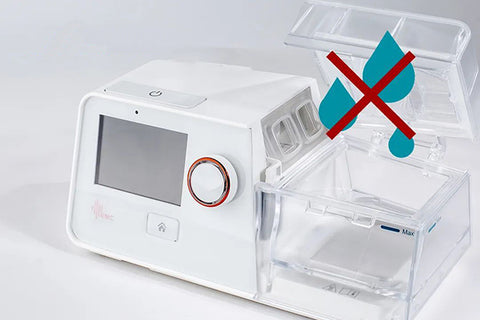1. What should I do if I get water in my CPAP machine?
Water in your CPAP machine is one of the most common causes of machine damage. If you get a little water in your CPAP machine, you can just let the CPAP machine air dry for use. But if there is too much water in the machine, many parts of your CPAP machine can be damaged. So, what should you do if you get water in your CPAP machine?
- Turn off the machine as soon as possible. If you don't turn off the CPAP machine in time, your machine can be further damaged.
- Do not turn on the power if your machine has not been treated properly. Once the machine is turned on, the motherboard can be burned out.
- Go to the manufacturer's "authorized" service partners for repair. Once the CPAP gets wet, the blower fan can be affected and long-term accumulation of moisture can damage the metal and circuit board. So, you should go to the authorized service center for professional repair.
Why will my CPAP machine get wet and how to avoid it?
In daily use, many users worry that the water chamber has not enough water and they will add much water more than the highest level. At this time, if the machine has large pressure, the airflow will make the water enter your machine.
If you turn over or take shake the machine when the CPAP machine and the humidifier are connected, the water in the humidifier can also enter your machine. So, how to effectively avoid it?
- Water in the chamber cannot exceed the maximum fill line.
- If you need to move your CPAP machine, make sure that the water chamber is free of water or you can take the water chamber out before moving the machine.
2. Why is the water in your tube?
Water in your tube can be caused by excess condensation. The humidifier is designed to provide added moisture for your comfortable breath. And the water in the water chamber can rain out in the air and enter your tube. You will find that you often see water in your tube in winter.
3. What is CPAP rainout and how to stop it?
Have you ever noticed that there is water in your mask or the tube? Does the water affect the use of the CPAP machine? And you don't know how to fix it. This is the phenomenon of CPAP rainout. When the humidity reaches the tube, the difference between internal and external temperature can cause condensation and the humidity will enter into your mask to make you wake up or it will enter into the tube to affect the use of the CPAP machine. So, how to prevent it?
- Use heated tubing. A heated tube can help balance the internal and external temperature to avoid rainouts. And the heated tube can also adjust the humidity in real-time to the temperature of the external environment.
- Move your CPAP machine to a lower position. Put the CPAP machine in a place lower than the position of your mask, which can help avoid the humidity entering your mask to make you uncomfortable.
- Adjust the temperature in the room. If your room is at a low temperature, especially in winter, condensation may appear in your tubing. At this time, you can turn up the thermostat in your bedroom or the air-conditioner in winter.
- Wrap your hose. There are tube covers in the market to make the air warm in the hose. The right hose can effectively help you sleep well and breathe well as well as prevent rainouts.
4. How To Tell If CPAP Machine Is Water Damaged?
The easiest way to tell if a CPAP machine has been damaged by water is to check whether it can be turned on and whether it can be operated properly. If it cannot work, water-damaged CPAP machines must be inspected and, if necessary, replaced by a legitimate service provider.




